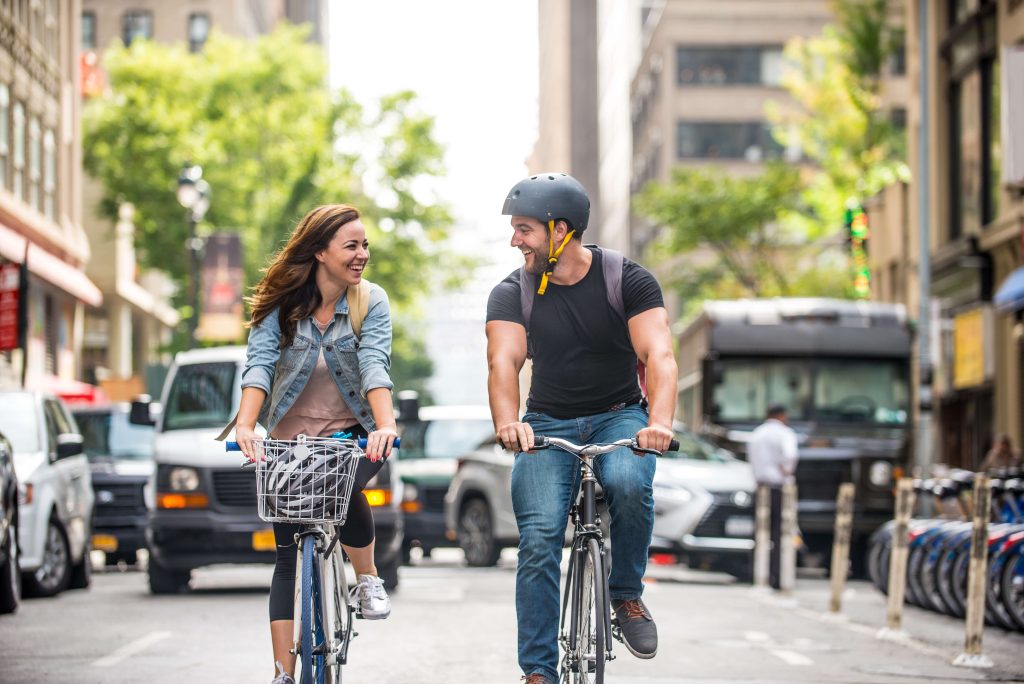
The UK Highway Code was updated in 2022, which introduced a new hierarchy of road users. While this means that cyclists now have greater protection when using the roads, it also introduces additional responsibilities.
In this guide, we’ll discuss five of the key reasons why cyclists need to exercise caution when at pedestrian crossings.
1. Pedestrian Safety
Pedestrian safety is one of the most important reasons why cyclists must exercise caution at pedestrian crossings. Pedestrians have the right of way at crossings which means that they are legally entitled to cross the road without being endangered by oncoming traffic. Cyclists who fail to yield to pedestrians not only put the pedestrians themselves at risk for accidents and injuries but also violate traffic laws and may face legal consequences as a result.
Furthermore, it’s important to recognize that pedestrians are often vulnerable road users who may be less visible or audible than other forms of traffic. They may be elderly, disabled, or have young children with them, all factors that could increase their risk for accidents. Cyclists must be aware of these potential risks and take appropriate precautions when approaching pedestrian crossings. This could include slowing down, using hand signals to communicate intentions, and making eye contact with pedestrians to ensure mutual awareness of each other’s presence.
2. Legal Responsibility
Legal responsibility is another important reason why cyclists must exercise caution at pedestrian crossings. In the event of an accident involving a pedestrian, a cyclist who fails to yield or otherwise violates traffic laws could be held legally responsible for any damages or injuries that result from their actions.
This could result in a pedestrian engaging the services of a personal injury solicitor, which means that in addition to facing fines and legal fees, the cyclist may also be required to pay compensation for medical expenses or other damages incurred by the pedestrian. Depending on the severity of the accident, this could amount to significant financial burdens that could have long-term consequences for the cyclist’s personal and professional life.
It’s worth noting that legal responsibility does not always fall solely on the cyclist. Pedestrians also have a responsibility to follow traffic laws and exercise caution when crossing roads. However, in cases where a cyclist is found to have violated these laws and caused harm to a pedestrian, they can expect to face legal repercussions for their actions.
3. Respect for Pedestrians
Respect for pedestrians is a third important reason why cyclists must exercise caution at pedestrian crossings. Pedestrians are an integral part of our communities and have the right to feel safe and respected while using public spaces. Cyclists who fail to yield or otherwise behave recklessly around pedestrians can contribute to a negative perception of cycling as a whole, which could lead to increased hostility towards cyclists and decreased support for cycling infrastructure.
Additionally, respecting pedestrians is simply the right thing to do. As members of the same community, we all have a responsibility to treat each other with kindness and consideration. This means being aware of our surroundings, following traffic laws, and prioritizing safety over convenience.
Cyclists can demonstrate respect for pedestrians in a number of ways. For example, they can slow down when approaching crosswalks and intersections, use hand signals to communicate intentions, and give pedestrians plenty of space when passing by. They can also be mindful of their behavior in shared spaces such as sidewalks or bike lanes where pedestrians may be present.
4. Ethical Responsibility
The fourth important reason why cyclists must exercise caution at pedestrian crossings is to help promote a culture of safety and responsibility on the roadways. When cyclists model good behavior and prioritize safety over convenience, they set an example for other road users to follow.
This can have a ripple effect throughout the community, encouraging more people to adopt safe and responsible habits while cycling, driving, or walking. It can also help build trust between different modes of transportation and create a more harmonious environment for all road users.
Furthermore, promoting a culture of safety can have long-term benefits for public health and sustainability. By making it safer and easier for people to choose active transportation options such as cycling or walking, we can reduce our dependence on cars and promote healthier lifestyles. This, in turn, can lead to reduced air pollution, improved physical fitness, and better overall quality of life for everyone in the community.
5. Personal Safety
The fifth important reason why cyclists must exercise caution at pedestrian crossings is to avoid potential legal consequences. In many jurisdictions, failing to yield to pedestrians in crosswalks or otherwise behaving recklessly around pedestrians can result in fines, points on your driver’s license, or even criminal charges.
Moreover, if a cyclist causes injury or property damage as a result of failing to exercise caution at a pedestrian crossing, they may be held liable for any damages or injuries that occur. This could lead to costly lawsuits and other legal repercussions that could have long-lasting financial and personal consequences.
By exercising caution and following traffic laws around pedestrian crossings, cyclists can help protect themselves from these kinds of legal consequences. They can also help promote a culture of responsibility and safety on the roadways by setting an example for others to follow.
Key Points
Cyclists must exercise caution at pedestrian crossings for a number of reasons. From personal safety to respect for pedestrians and reducing the risk of accidents and injuries on the roadways. By exercising caution at pedestrian crossings, cyclists can play an important role in creating safer, healthier, and more responsible communities for everyone on the roadways.










